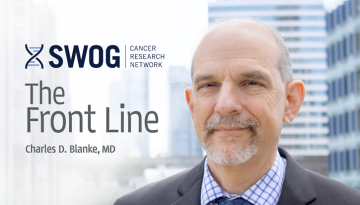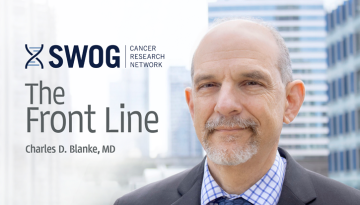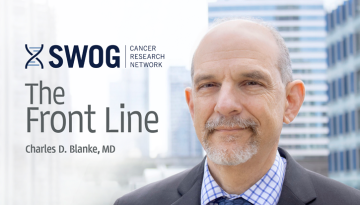14+ Million Years of Life – Modest Investment
Last year a team of researchers led by SWOG’s Joseph Unger, PhD, but with representation from all four adult National Clinical Trials Network (NCTN) groups, published the astonishing results of an analysis of the impact of 40 years of cooperative group/NCTN clinical trials: 14 million life-years gained by patients in the US, from 1980 through 2020.
A new analysis, again led by Dr. Unger and again conducted with collaborators from all of the NCTN adult groups, refines that estimate slightly upward (14.2 million life-years) but also estimates another critical factor: cost. Those 14.2 million added life-years required a federal government investment of only about $326 per life-year gained.
As if quantifying the huge impact and extremely modest cost of these trials wasn’t enough, the team also details some of the research’s scientific and additional clinical benefits (the paper has just been published online in the Journal of Clinical Oncology). The 162 trials they analyzed (NCTN phase III trials reported on since 1980 that had positive results for one or more clinical, time-dependent outcomes) were cited in the literature more than 165,000 times through 2020, and 87.7 percent of the trials have been referred to as supporting evidence in cancer care recommendations (such as in National Comprehensive Cancer Network guidelines) or in Food and Drug Administration package inserts for new drugs.
To provide some context on the figure of 14.2 million life-years, in 2019, 9.3 million years of life were lost to cancer in the US; from 1980 through 2020, the US population lost about 336.8 million years of life to the disease. The 14.2 million life-years gained from these NCTN trial results represents about 4.2 percent of that figure.
Of course, life-year gains continue to accrue as people continue to be treated for cancer based on the findings of those trials. By 2030, the gains from those four decades of results are expected to total 24.1 million life-years.
While these figures are inspiring, they don’t tell the whole story. The authors list additional benefits that can accrue from the kinds of NCTN trials they analyzed. For example, such trials offer vulnerable populations access to protocol treatments that might not otherwise be available to them from pharmaceutical company trials. And they generate a treasure trove of clinical data that can be – and is – mined in secondary analyses that can improve treatments and point the way to new hypotheses.
The researchers estimated added life-years using only trials that showed improved overall survival, but they also discuss potential benefits generated by other trials not considered in this analysis. For example, non-inferiority trials can demonstrate reduced toxicity, lower costs, or improvements in care delivery. Studies can also, by returning negative results, mark which treatments should not be used, preventing needless toxicity.
Finally, they note the NCTN groups (often working with the NCI’s Community Oncology Research Program) also conduct many trials that save and extend lives by helping us better control and prevent cancer (population science studies).
I want to close by focusing again on cost. As a point of comparison, national expenditures on cancer care in the US for 2015 were estimated at $183 billion. Stacking this figure beside the $4.63 billion (in 2020 dollars) spent over 40 years to fund these cooperative group clinical trials – and the 14.2 million life-years they have added, thus far, for those with cancer – I can only say $326 per life-year gained has to be considered a bargain.
The authors write that the findings demonstrate the critical role of government-sponsored research in extending the lives of people with cancer. Absolutely! But, I would add they also demonstrate an exceptional level of efficiency in NCTN research and truly impressive “bang for the buck” for the US taxpayer.
Other Recent Stories



